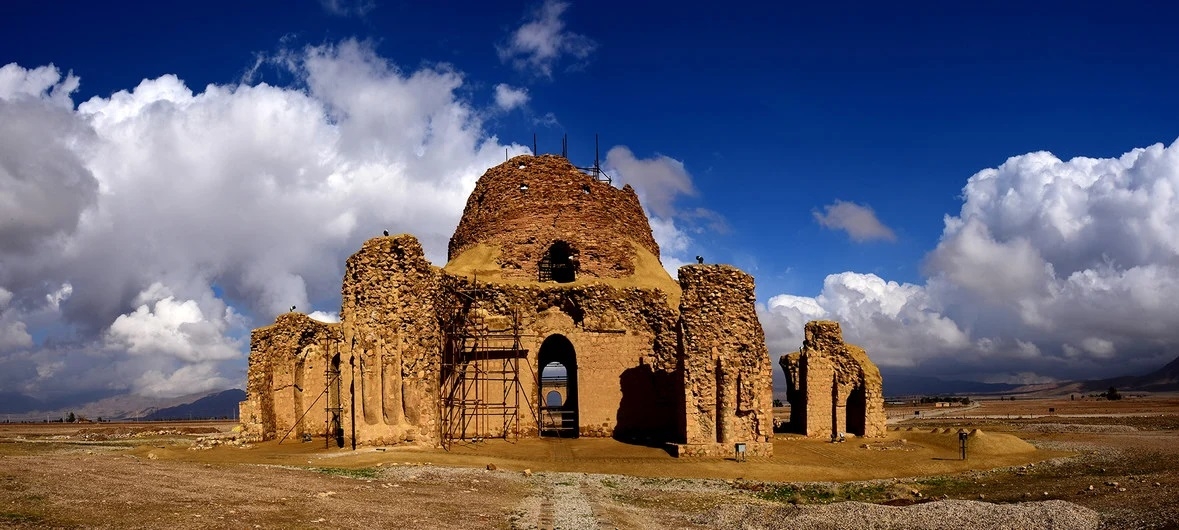On January 4, 2020, President Trump issued a series of tweets responding to Iranian threats of retaliation for the United States’ recent killing of Iranian General Qasem Soleimani. In those tweets, President Trump warned that the Administration has targeted 52 Iranian sites of historical and cultural significance that will be hit “very fast and very hard” in the event that Iran strikes any Americans or American assets.
President Trump’s warning has generated much controversy and invited substantial criticism as the act of intentionally targeting cultural property in armed conflict is widely recognized as a violation of customary international law, codified as a war crime, and is further prohibited by several authoritative legal instruments. Many critics also note that the President’s explicit threat to such culturally significant sites arguably counters the United States’ longstanding commitment to prevent destruction of cultural property during armed conflict and to protect such property when it is threatened.
One of the preeminent modern legal instruments to explicitly address the protection of monuments, places of worship and works of art was of U.S. origin, commissioned by President Abraham Lincoln during the Civil War. Article 35 of the Lieber Code of 1863, formally titled General Order No. 100, provided that “classical works of art, libraries, scientific collections, or precious instruments… must be secured against all avoidable injury.” Under the Leiber Code, destruction of culturally significant property was permitted only in the event of “military necessity” – a legally significant term that historically has been understood to encompass measures indispensable for ending war, or measures that are lawful according to modern law and usages of war.
The protective principles for cultural property articulated in the Leiber Code later manifested in international agreements related to the law and customs of war, including the Brussels Declaration of 1874 and the Hague Regulations on the Laws and Customs of War on Land of 1899 and 1907.
At the time of drafting the four Geneva Conventions of 1949–the core of international humanitarian law or the law of armed conflict—the general view in the international arena was that the destruction of cultural property did not reach the same level of egregiousness as other war crimes; thus, the original text of the Convention did not explicitly protect cultural property in war times or identify such an act as a war crime (Article 53 broadly prohibits the destruction of real or personal property). However, the 1977 Additional Protocols to the Convention provide for the protection of cultural property (Article 53 of Protocol 1 and Article 16 of Protocol II), affirming that the destruction of cultural property is an act incongruous with and violative of the prevailing international understanding of the customs and laws of war. Such an addition was likely inspired in part by the influence and broad acceptance of the 1954 Hague Convention.
The 1954 Hague Convention for the Protection of Cultural Property in the Event of Armed Conflict is the international agreement most exclusively dedicated to the protection of cultural heritage in the event of armed conflict. The 1954 Hague Convention, inspired by the massive destruction and looting of cultural objects and monuments in World War II, imposes obligations on contracting parties to safeguard and respect cultural property during hostilities and armed conflict, as well as peace time, and the Convention’s protections extend to both immovable and movable cultural heritage, i.e., monuments, architecture, archaeological sites, works of art, manuscripts, books, etc. The Preamble to the 1954 Hague Convention espouses the clear and uncompromising position that “damage to cultural property belonging to any people whatsoever means damage to the cultural heritage of all mankind…” and the “preservation [of such property] is of great importance for all peoples of the world…” Article 4 of the 1954 Hague Convention regulates the conduct of parties during hostilities, outlining the obligations of those parties to respect cultural property and refrain from exposing such properties to destruction as well as from directing hostile acts against cultural property. President Clinton transmitted the 1954 Hague Convention to the Senate for ratification in January 1999, and the United States deposited its instrument of ratification in March 2009, subject to four understandings and one declaration. There are currently 133 contracting parties to the Convention.
The United States’ Department of Defense Law of War Manual incorporates certain principles of the 1954 Hague Convention’s Second Protocol, and specifically prohibits hostile acts carried out against cultural property.
The Rome Statue of the International Criminal Court sets out those acts and omissions that constitute war crimes as defined by the 1949 Geneva Conventions and its 1977 Protocols. Included in the Rome Statute’s list of serious violations is “intentionally directing attacks against buildings dedicated to religion, education, art, science or charitable purposes, historic monuments…provided they are not military objectives.” (Article 8). These attacks can apply to both international and non-international armed conflict. As of November 2019, 123 States have ratified the Rome Statute; the United States is not among the ratifying parties.
The 2015 prosecution of Ahmad Al Faqi Al Mahdi in the International Criminal Court for the intentional destruction of nine mausolea and the Sidi Yahia mosque in Timbuktu was the first instance where the sole charge was the destruction of cultural heritage pursuant to the Rome Statute, Article 8. While the Balkan Wars saw many deliberate acts of cultural property destruction and subsequent prosecutions for those war crimes in the International Criminal Tribunal for the former Yugoslavia (ICTY), most indictments charged a series of crimes and violations. The 2015 prosecution of Al Mahdi affirmed the international community’s singular objection to the wanton destruction of cultural property and set precedent for subsequent prosecutions under that offense alone.
Finally, the UN Security Council has adopted Resolutions that signal the supreme importance of protecting cultural heritage and preventing against its destruction, a few of which were adopted in response to the ISIS attacks on cultural sites throughout Iraq and Syria. Most significantly, in March 2017, the UN Security Council adopted Resolution 2347, which deplores and condemns the unlawful destruction of cultural heritage, of whatever nature. Resolution 2347 evinces a clear recognition of the general international law principles that work to protect cultural property and prevent its destruction. Further, the Resolution acknowledged the 2015 prosecution of Al Mahdi and affirmed that the unlawful attack against cultural sites can constitute a war crime. Under Chapter VII of the United Nations Charter, resolutions adopted by the Security Council are legally binding on all UN member states.
Take-away
At this moment, it is unclear the efficacy of President Trump’s threat to target Iranian cultural sites. Early Sunday morning, Secretary of State Mike Pompeo clarified that any American military action would be “consistent with the rule of law.” While President Trump later protested Secretary Pompeo’s statement, arguing that an attack on cultural sites is a legitimate retaliatory act, additional senior US officials have affirmed the United States’ commitment to behave consistently with the laws and norms of armed conflict, and to respect Iranian culture.




